Playlist
Cloud First - Strategy & Roadmap
Show more
11 videos in this playlist
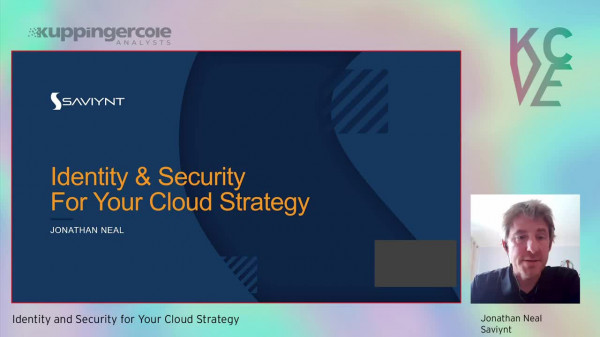
Event Recording
Jonathan Neal: Identity and Security for Your Cloud Strategy
Jun 22, 2020
Join the conversation as we help you explore laying the foundation of identity and security into your cloud-first strategy. If the following questions have crossed your mind, we're happy you found your way to this session.
A. Business-critical apps are constantly being migrated to the cloud to keep up with business. How do I know who is accessing what and if it is appropriate? Can I eliminate persistent accounts and provide JIT access? B. Native compliance controls are provided from each of my cloud providers making it difficult, inefficient, and...
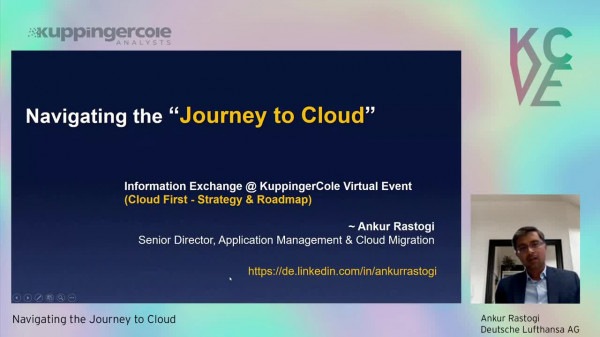
Event Recording
Ankur Rastogi: Navigating the Journey to Cloud
Jun 22, 2020
Cloud is the foundation for any digital transformation. Most organizations now have cloud embedded not just in their IT strategy but also in their digital strategy. Cloud creates an opportunity to modernize an organization's application portfolio. While the benefits of migrating to cloud are well known, the journey to cloud comes with its own challenges and risks. If not planned properly, this can cause major headaches on the way. The session covers the benefits of a proper cloud strategy, how to set up a cloud journey and the risks that one must be ready to manage on the way.
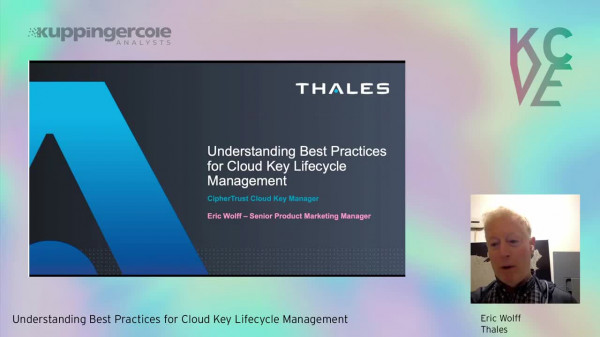
Event Recording
Eric Wolff: Understanding Best Practices for Cloud Key Lifecycle Management
Jun 22, 2020
Cloud Security best practices arise from the shared responsibility model for cloud computing, which states that customers are responsible for the security of data in the cloud. This session will cover the latest trends in cloud security, cloud provider shared security models, and the use of data encryption as a best practice. With cloud encryption key lifecycle management seen by many as a problem yet to be solved, the session will wrap with an overview of CipherTrust Cloud Key Manager from Thales.
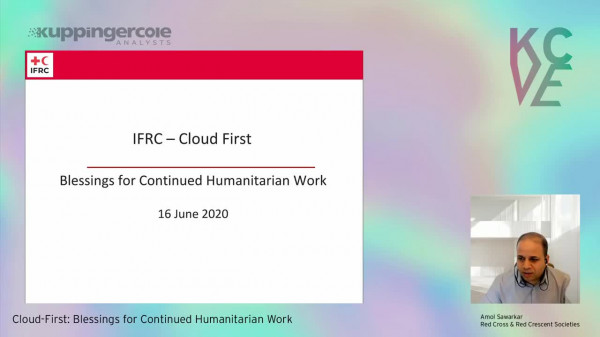
Event Recording
Amol Sawarkar: Cloud-First - Blessings for Continued Humanitarian Work
Jun 22, 2020
Moving to the cloud is a relatively settled concept today. We all knew benefits; But who thought someday, the same will offer to stay and work from home; that also 100%. This is a short tour to see why IFRC opted to embrace the cloud, challenges addressed, and derived benefits as well as continued efforts in optimizing further.
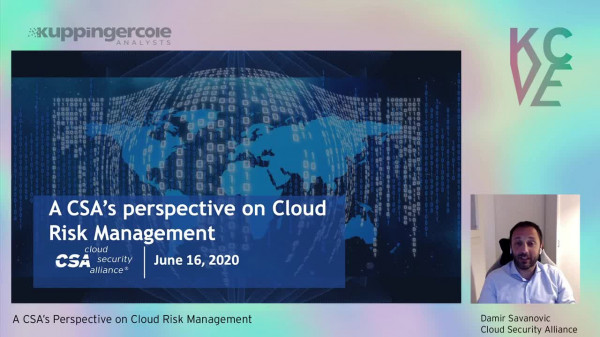
Event Recording
Damir Savanovic: A CSA’s Perspective on Cloud Risk Management
Jun 22, 2020
Cloud computing is a proven and globally accepted enterprise delivery and operational technology model and with this growing market segment, also concerns regarding privacy, security and compliance are increasing. The rapid growth, combined with the inherent complexity of cloud computing, appears to be straining the capabilities of existing governance and risk management frameworks. In this presentation, I will question the perceived effectiveness of current governance and maturity in the use of risk management frameworks being applied to cloud computing.
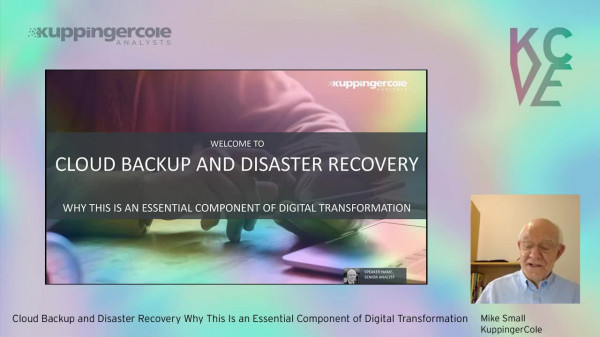
Event Recording
Mike Small: Cloud Backup and Disaster Recovery Why This Is an Essential Component of Digital Transformation
Jun 22, 2020
All organizations need to consider the risks related to the availability of their business-critical data and take appropriate measures to mitigate these risks. In most cases this will involve investing in backup and disaster recovery products and services. In today’s hybrid IT environment these must cover both on-premises and cloud delivered services in a consistent way. This session will cover KuppingerCole’s research into this area and summarize our Market Compass Cloud Backup and Disaster Recovery.
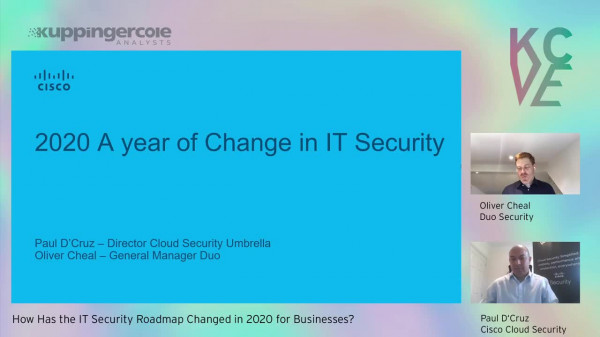
Event Recording
Oliver Cheal, Paul D'Cruz: How Has the IT Security Roadmap Changed in 2020 for Businesses?
Jun 22, 2020
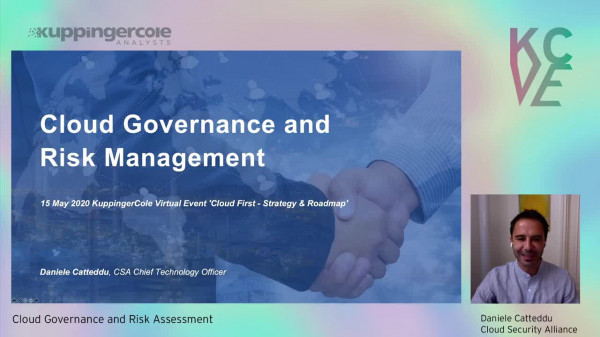
Event Recording
Daniele Catteddu: Cloud Governance and Risk Assessment
Jun 22, 2020
The rapid growth in both scope and market share, combined with the inherent complexity of cloud computing, seem to exceed the capabilities of existing governance and risk management approaches. As users, and the uses of cloud computing evolve, so must the supporting governance models. This includes the transformation and adaptation of governance and risk management programs into the company's culture, and the evolution of the skills and expertise of the IT and Security professionals.
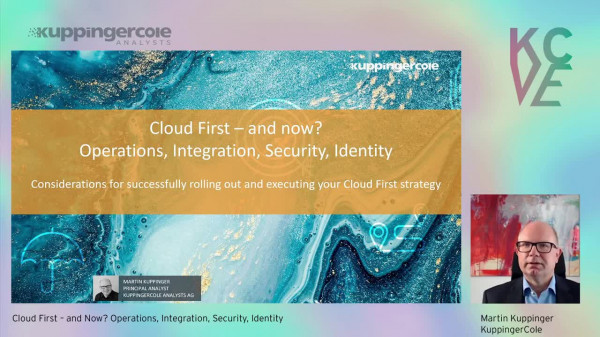
Event Recording
Martin Kuppinger: Cloud First – and Now? Operations, Integration, Security, Identity
Jun 22, 2020
In his Opening Keynote, Martin Kuppinger, Principal Analyst at KuppingerCole, will talk about the practical consequences of having a “cloud first” strategy in place. Declaring such a strategy is simple. Successfully executing it is the bigger beast to tame. Martin Kuppinger will look at the success factors for executing a “cloud first” strategy and identify what it needs in the organization, operations, integration, vendor selection, risk assessment, management, security, and identity. He also will look at the various levels of such cloud first strategies,...
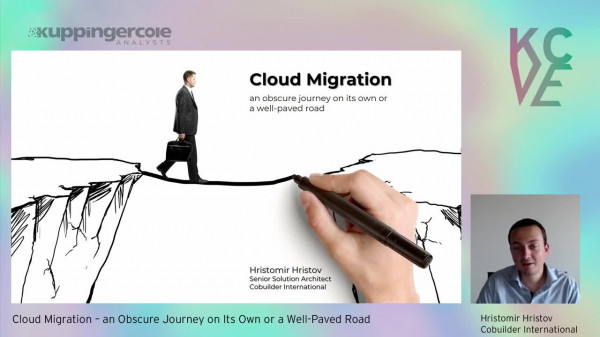
Event Recording
Hristomir Hristov: Cloud Migration – an Obscure Journey on Its Own or a Well-Paved Road
Jun 22, 2020
A story based on personal experience of leading several companies to smooth cloud migration. We will look at some real-life tips & tricks. We will discuss how to choose the cloud provider and the cloud setup – single-cloud, multi-cloud, or hybrid cloud. We will talk about what does ‘cloud-readiness’ means and when it is achieved. Should we start with a Zero Trust Architecture? What are the possible approaches for cloud migration - pros and cons. After all, is a migration a one-off event or a continuous process?












